(Paris 1854 - 1894 Auvers-sur-Oise)
Portrait of two young girls
Oil on panel
28 x 22 cm
Provenance:
Private collection, France
Norbert Goeneutte was a French Impressionist painter and printmaker who is best known for his depictions of Parisian life in the late 19th century. He was associated with artists like Édouard Manet, Edgar Degas, and Pierre-Auguste Renoir, but his work had a unique style, blending Impressionism with his own sensitivity to light, color, and mood. Goeneutte is also celebrated for his portraits, including those of children, which reveal his talent for capturing the innocence and charm of youth.
Goeneutte’s portraits of children are known for their sensitivity and gentle portrayal of his young subjects. His works exude a sense of affection and tenderness, highlighting the innocence of childhood. Whether depicting children alone or in familial settings, Goeneutte often emphasized the natural charm and purity of the child, presenting them in a warm, intimate light. Like other Impressionists, he was highly focused on the effects of light and color, even in his portraits of children.
Let’s break down the Portrait of the two young girls in terms of specific artistic techniques and themes that align it with Norbert Goeneutte’s style. We can then dive deeper into how it resonates with his Impressionist approach, especially regarding portraiture.
This portrait of the two girls has characteristics of Norbert Goeneutte's maniera, particularly in his Impressionist technique and the sensitivity with which the children are depicted, confirming the attribution. The brushstrokes are visible and free, especially in the treatment of the clothing and background. The fabric is rendered with quick, almost sketch-like strokes, particularly in the whites of the older girl's dress. The background follows a similar treatment, with deep greens applied in textured, uneven layers that give the impression of an outdoor setting. This technique enhances the focus on the children by creating a contrast between the more abstracted background and the detailed faces.
This is very much in line with his Impressionist approach, where the focus is less on hyper-realistic detail and more on capturing the atmosphere and feeling of the moment. Like other Impressionists, Goeneutte was highly focused on the effects of light and color, even in his portraits of children. His brushstrokes are often loose and fluid, which gives his portraits a sense of movement and vibrancy. He used delicate hues—soft pinks, blues, and pastels—that evoke a delicate atmosphere, enhancing the youthful vitality of his subjects.
The use of soft, diffused light on the girls' faces, creating a gentle glow, is reminiscent of Goeneutte’s work. He often bathed his subjects in natural light, allowing for subtle transitions between light and shadow, which is evident here as well. The muted, earthy tones of the background contrast nicely with the delicate pinks and whites of the children's clothing. One of the defining features of Goeneutte’s portraits of children is his masterful use of natural light. His paintings often feature sunlight, bathing the child in a soft, radiant glow. This use of light not only adds warmth to the composition but also emphasizes the softness of the skin and the delicate features of the child.
The older girl’s side profile is beautifully composed, with a sense of thoughtfulness in her gaze, while the younger girl’s face is more playful and direct, engaging the viewer. This sensitivity to the expressions and natural poses of children is very much in the artist’s spirit. Like Goeneutte, who often depicted children in informal settings, this portrait captures the subjects in a relaxed, unposed manner. The spontaneity of the scene and the intimate moment shared between the two girls is similar to his way of portraying the innocence and warmth of childhood.
The girls' expressions are perfectly aligned with Goeneutte’s method of depicting children. The older girl is lost in thought, gazing into the distance with a look of quiet contemplation. The younger girl, in contrast, meets the viewer with a soft, almost shy smile. The emotional contrast between the two adds depth to the scene, showing different aspects of childhood—thoughtfulness and innocence. The artist often imbued his subjects with a sense of inner life, which is mirrored here.
Goeneutte tended to use a muted, naturalistic palette, with earthy tones juxtaposed against soft pastels. His use of color was never jarring; rather, he achieved harmony through tonal modulation, which allowed his portraits to maintain a sense of calm and serenity. The earthy green background serves as a subtle yet effective contrast to the warm, peachy skin tones of the girls. The pink dress of the younger girl, though vibrant, does not overpower the composition—it adds a delicate splash of color, much like the painter might have used soft pastels to create interest in his scenes. The careful use of green, peach, and pink demonstrates a similar color harmony to that found in his work, where the tones work together to enhance the natural beauty of the scene without overwhelming the viewer. The palette is quiet and balanced, with no harsh contrasts, the artist's preference for subdued, harmonious compositions.
Goeneutte often chose compositions that were intimate and personal, with subjects filling a significant portion of the frame. He was particularly adept at cropping scenes, focusing the viewer’s attention on the figures rather than the surroundings. This allowed him to create portraits that felt direct and unmediated, almost like a glimpse into a private moment. The tight framing of the two girls draws the viewer directly into their world. The proximity of the girls to each other, combined with the focus on their heads and shoulders, lends the painting a sense of closeness and familiarity. This is typical of Goeneutte’s approach, where the figures are often depicted up close, their surroundings suggested rather than fully detailed. The girls are placed slightly off-center, a compositional choice that adds informality to the portrait. This subtle asymmetry keeps the composition dynamic and enhances the feeling of spontaneity.
Goeneutte frequently painted everyday life, and his portraits of children were no exception. He captured the children as they were, without idealizing or romanticizing them, often showing them in everyday clothes or simple settings, focusing on their natural beauty. There’s a similar sense of naturalism in this painting, with the girls dressed in simple garments and posed in an everyday manner. The lack of adornment or dramatic poses gives the painting a candid feel, as if the artist caught the girls in a quiet moment of their day. This is in line with Goeneutte’s tendency to depict children as they truly are. The artist, like many of his contemporaries, was influenced by photography, which had become an increasingly important medium in the late 19th century. His compositions often have a snapshot-like quality, capturing the children in natural, unposed moments. This influence of photography is evident in the way he framed his subjects, often allowing the viewer to feel like they are witnessing a fleeting, candid moment.
When it comes to portraits by Norbert Goeneutte, he tended to work more frequently on canvas, especially for larger, more formal works. However, the artist did create smaller, more intimate portraits on wood panels as well, especially when he was sketching or working in a quicker, more informal manner. Panels were sometimes chosen for their smooth surface, which allowed for finer details, making them suitable for small-scale portraits.
There are stylistic comparisons to be made between the present Portrait of two young girls and Goeneutte’s portraits of children below: Portrait de Jean Buhot, 1891, oil on panel, 35.5 x 26.8 cm, Musée Alphonse-Georges Poulain; and Young girl with red ribbon, oil on panel, signed, located and dated lower “1887 Paris,” 22 x 15 cm, Drouot, 19 May 2001.
The eldest son in a family of six children, Norbert Goeneutte, as an aspiring artist, was placed in a difficult position when his father died in 1871, leaving him to support this large family. However, after a trying period, he finally enrolled at the École des Beaux-Arts, joining Isidore Pils’s studio in 1872. After the death of Pils, Henri Lehmann became his new master. He befriended many of the young Impressionists, including Edgar Degas and Auguste Renoir, and he often acted as a model for the latter, appearing in Le Moulin de la Galette, for example. Linked to the Impressionists but evolving from the Realist tradition, he painted scenes from contemporary Parisian life.
He frequented the Père Lathuille, a famous cabaret, where he met Manet and was introduced to the artistic circle at the Café de la Nouvelle Athènes. He soon began exhibiting at the Salon, but, despite his friendship with many notable Impressionists, never participated in one of their group exhibitions.
With the financial support of his brother, he frequently traveled abroad, including trips to London (1880) and Venice (1890). He also traveled extensively in France. These visits produced a multitude of landscapes and cityscapes. In 1889, he became one of the founders of the “Société des peintres-graveurs français,” together with his friends Henri Guérard and Félix Bracquemond. That same year, he exhibited at the Exposition Universelle.
In 1891, doctor Paul Gachet, an avid supporter of the arts and an amateur artist, diagnosed Goeneutte as having a weak heart and recommended that he settle in a rural area for his health. Gachet was able to find him a house near his own in Auvers-sur-Oise, called the "Villa Musette," where he settled with his mother, his sister Reine, and his brother Charles. Once there, he became involved with a group of artists associated with Charles-François Daubigny and did engraved illustrations together with Gachet. Three years later, he died of complications from what had turned out to be a lung disease (possibly tuberculosis). He is buried there, near the grave of Vincent van Gogh, who had also been treated by Gachet during his final illness.
While Goeneutte may not be as widely known as some of his contemporaries like Renoir or Degas, his portraits of children are important for their sensitivity, warmth, and impressionistic approach to capturing fleeting moments of youth. His use of light, color, and spontaneous compositions made his work stand out among the artists of the late 19th century.
This portrait indeed captures many elements of Norbert Goeneutte’s style, particularly in its use of light, loose brushwork, and emotional sensitivity. The overall atmosphere—the interplay of intimacy and naturalism, as well as the harmony of color and composition—echoes the painter’s way of approaching his child subjects. It’s a wonderful reflection of Impressionist portraiture, where the focus is on the fleeting moment, the subtle moods, and the natural charm of everyday life. Overall, the painting exudes a sense of tenderness and familiarity, which are key aspects of Goeneutte’s portraits of children.














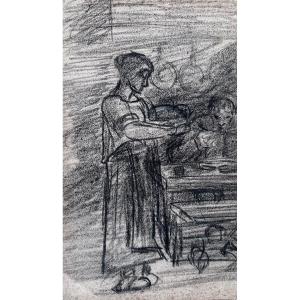
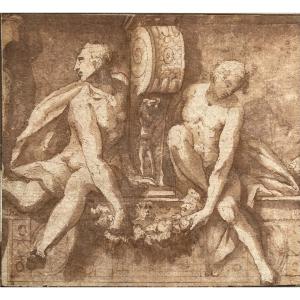









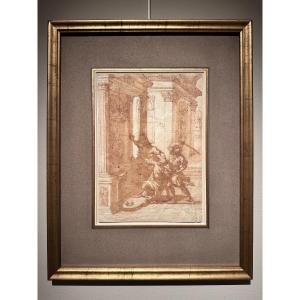


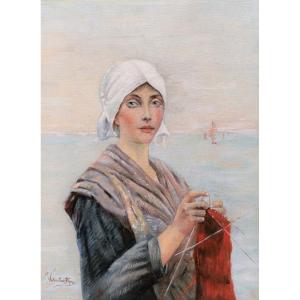



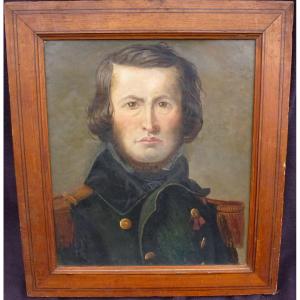



 Le Magazine de PROANTIC
Le Magazine de PROANTIC TRÉSORS Magazine
TRÉSORS Magazine Rivista Artiquariato
Rivista Artiquariato